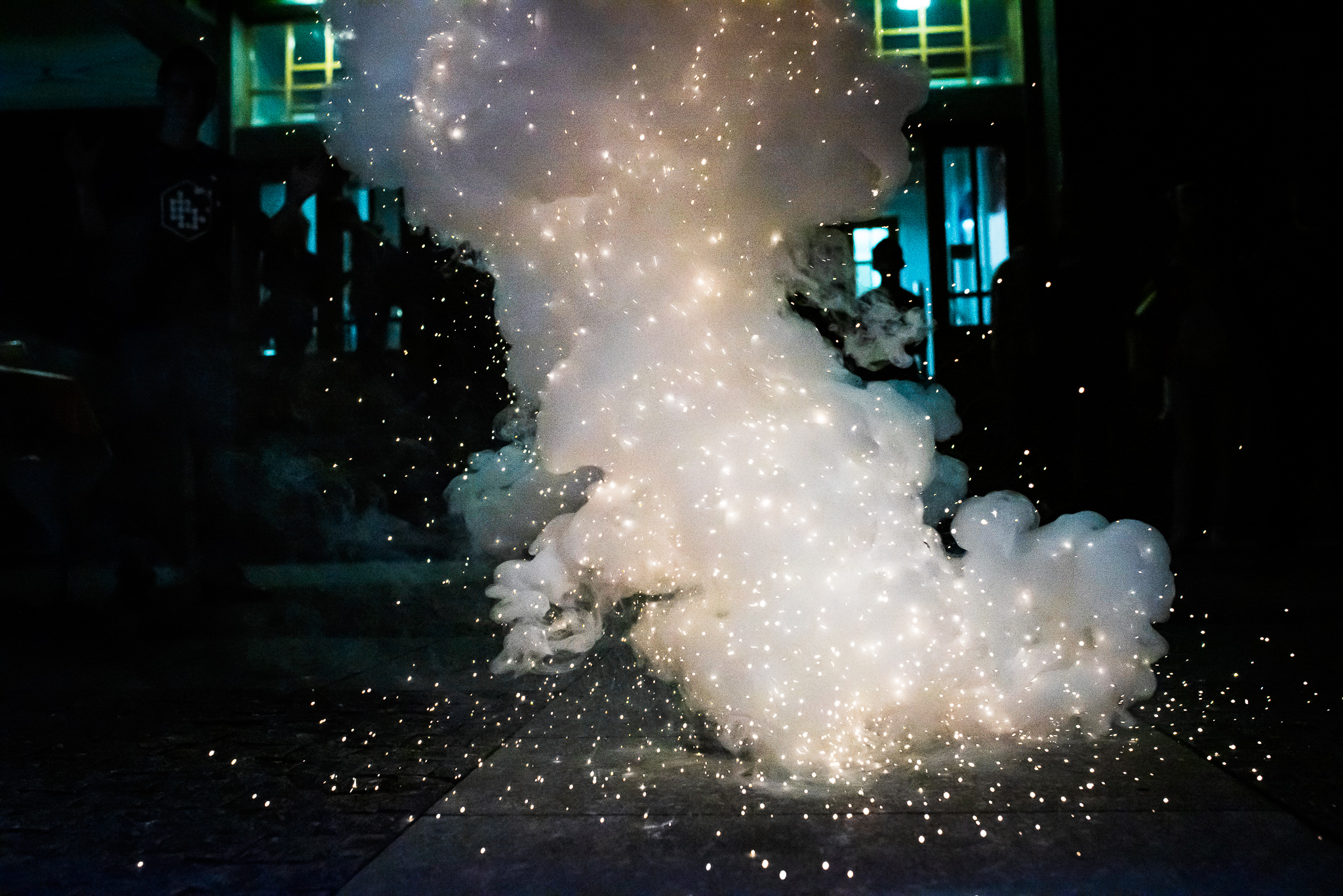European Researchers’ Night 2022 at IOCB Prague

Researchers’ Night is a science popularization event that researchers from IOCB Prague regularly participate in.
The program at IOCB Prague place on Friday 30 September from 6 to 10 pm. The excursions are repeated regularly starting every 15 minutes.
Where can you find us and how can you get to us? Here and perhaps this way.
Program
(See below for a description of each topic.)
In English only:
- 7:30 pm 🤏 Let's touch molecules
- 8:15 pm 🚦 Fluorescence in action
- 9:30 pm 🤏 Let's touch molecules
In Czech / English:
- 👃🏽 Olfactory laboratory (continuously)
- ✋ Tactile lab (continuously)
Show in front of the main entrance:
- 💥Colorful and fiery show
In Czech only:
- 6 pm 🔔 Sound excursion into the world of molecules
- 6:15 pm 🚦 Fluorescence in action
- 6:30 pm 🤏 Let's touch molecules
- 6:45 pm 🚶♀️ A walk through the secret corridors of the institute
- 7 pm 🔔 Sound excursion into the world of molecules
- 7:15 pm 🚦 Fluorescence in action
- 7:45 pm 🚶♀️ A walk through the secret corridors of the institute
- 8:00 pm 🔔 Sound excursion into the world of molecules
- 8:30 pm 🤏 Let's touch molecules
- 8:45 pm 🚶♀️ A walk through the secret corridors of the institute
- 9:00 pm 🔔 Sound excursion into the world of molecules
- 9:15 pm 🚦 Fluorescence in action
- 9:30 pm 🚶♀️ A walk through the secret corridors of the institute
🤏 Let's touch molecules – 7:30 pm and 9:30 pm
Although we cannot see individual molecules with the naked eye, we can touch them. In this excursion, we will introduce you to a scanning tunneling microscope, which can display a given molecule by touching with a special tip. You will thus be able to look at the surface of graphite and its individual atoms, and you may even see other molecules lying on the graphite surface.
🚦 Fluorescence in action – 8:15 pm
Fluorescence is the ability of molecules to emit colored light. This phenomenon often accompanies scientists on their first steps on the path to drug development. These drugs are most often targeting enzymes, i.e., molecular machines that catalyze chemical reactions in living organisms. In our laboratory, you can see with your own eyes how we use fluorescence to purify enzymes and test potential drugs.
👃🏽 Olfactory laboratory (continuously)
The world around us is full of pleasant fragrances and less pleasant odors. What chemicals are responsible for the smell of roses, almonds or even mint? Did you know that our nose can detect even subtle changes in the chemical structure of compounds? Test your nose in our olfactory lab.
✋ Tactile lab (continuously)
When introduced to new objects, children tend to touch everything thoroughly. How does our sense of touch develop as we grow, mature, and grow older? What kinds of materials and shapes can we distinguish just by touching? Will you feel different chemical vessels and tools? And can you complete a simple jigsaw puzzle using only your sense of touch? Roll up your sleeves and come to our unique tactile lab.
💥 Colorful and fiery show (in front of the main entrance)
Chemical reactions often abound in a surprising number of colorful transformations and sometimes even surprise with an explosion. The best ones will catch your attention right in front of the main building of the IOCB.
🔔 Sound excursion into the world of molecules (in Czech only)
Is it possible to sound the molecules? You may not have known that the action of radio waves on the nuclei of atoms in molecules manifest themselves as sounds. With the right amplification, you can hear how different chemicals sound. Carry off an extraordinary molecular symphony experience!
🚶♀️ A walk through the secret corridors of the institute (in Czech only)
Anyone who is not afraid of the dark and the secret corridors, where an endless tangle of pipes leads, is welcome to join us. See how the intricate workings of our cutting-edge institute are secured, and get a closer understanding of the practical side of the science behind the scenes. Don’t forget a flashlight!



